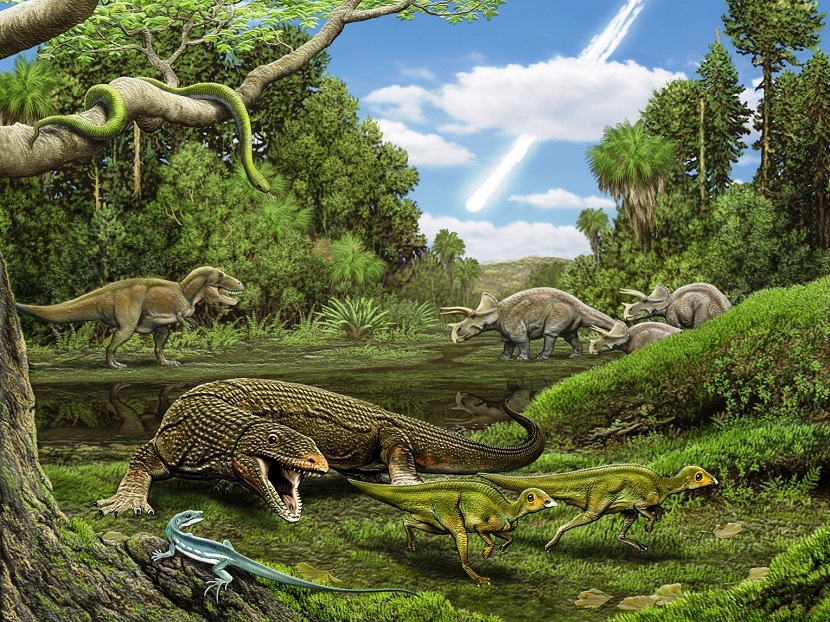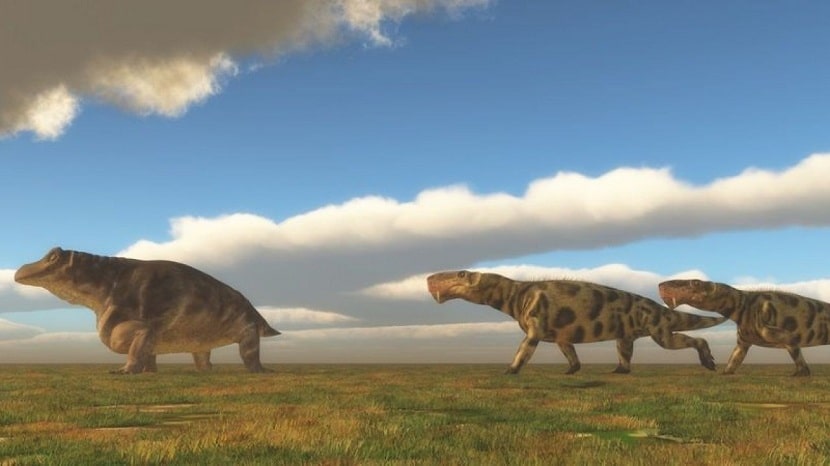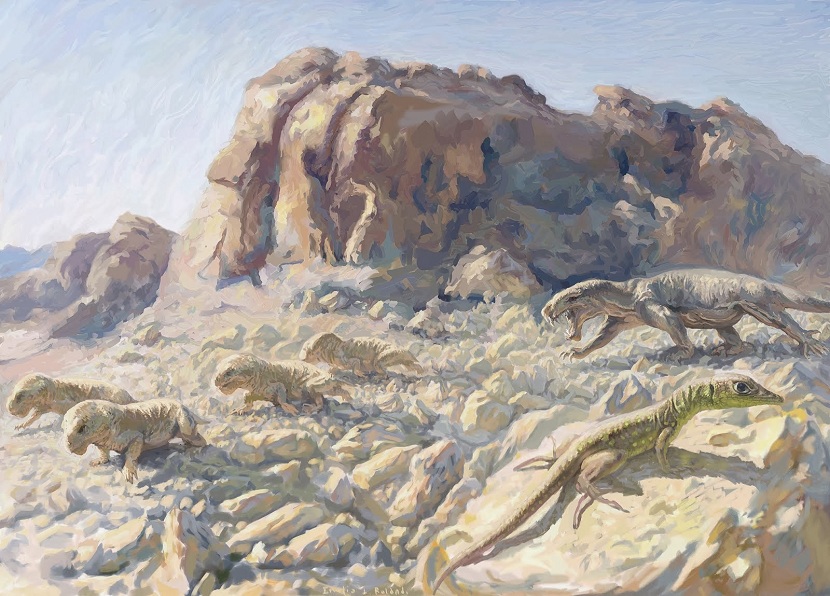
We travel back to the Paleozoic era in its last period. Its about Permian. The Permian is a period that is considered a division of this scale of the geological time. It was a period that began approximately 299 million years ago and ended 251 million years ago. As in most of the geological periods that have taken place on this planet, the strata are those that define the beginning and end of a period that is well identified.
In this article we are going to tell you about all the characteristics and geological events that took place during the Permian.
Key features

This knowing that the beginning and end of a geological period is not marked completely exact. Thanks to the strata, they can be known approximately how old they are. The end of the Permian period is marked by a great extinction that took place more accurately on this date. The Permian is preceded by some periods such as the Carboniferous and is followed by some periods such as the Triassic.
The Permian name is due to the huge and extensive deposits found in the region around the city of Perm in Russia. The reservoirs that have been found are mainly red strata with continental sediments and very shallow marine exposures.
Throughout this period there were major climatic changes on a global scale with considerable importance. The general trend was from a tropical climate to drier and more arid conditions. Thus, it can be said that the trend of temperatures at this time is to increase. During the Permian there was a contraction of the swamps and all surface water bodies.
Many of the tree ferns and amphibians that required more humid conditions began their regression. And it is that if the environmental conditions are not favorable, the period of adaptation to the new environmental conditions is much more complicated. Ferns that have seeds, reptiles and mammalian reptiles are those that inherited the Earth.
Permian Geology

The glaciers that were already in place during the Carboniferous already existed in the southern polar region of Gondwana. Due to the increase in global temperatures these glaciers receded along the Permian. During this period the Hercynian orogeny was able to develop thanks to the high level of seismic activity. As the tectonic plates were moving more intensely, this orogeny could be formed, which led to the formation of the great continent called Pangea.
When this period began, our planet was still suffering from the last effects of the glaciation. This means that all the Polar regions were covered by vast layers of ice. Sea level during the Permian was generally low. The union between Siberia and Eastern Europe existed throughout the Ural mountains what produced the almost complete union of the entire super continent called Pangea.
In Southeast Asia we find the only large land mass that was separated from the rest and would remain so during the Mesozoic. Pangea was located on the Equator and it extended towards the poles with the corresponding effect or in the ocean currents. At this time in geological time there was the great ocean called Panthalassa. This ocean is considered "the universal sea." There was also the Paleo Tethys ocean, located between Asia and Gondwana. The continent of Cimmeria was formed from a dislocation between Gondwna and a drift to the north. This led to the complete closure of the Paleo Tethys ocean. This is how a new ocean was growing at the end of the sun known as the Tethys Ocean that would dominate much of the Mesozoic.
Permian climate

Due to the increase in global temperatures, there were extensive continental areas that created climates with quite a few extreme variations between heat and cold. The areas that stood out for their cold climate are what we call today continental climate. In these climates there were monsoon conditions with seasonal rainfall.
On the other hand, in areas whose climate stood out for having high temperatures we find quite widespread deserts. The drier conditions favored the extension and breadth in the distribution of gymnosperms. These are plants with seeds enclosed in a protective covering that have a greater margin of survival in drier conditions. Plants like Tehran ferns need to disperse their spores and had a fairly high regression.
Trees that may have been extended during the Permian climate they were conifers, ginkgos and cycads. Sea level generally remained somewhat low. This caused that the ecosystems near the coast were limited by the union of almost all the great continents in a single super continent.
This reason could well have caused part of the widespread extinction of marine species at the end of this period. The main cause is the severe reduction of the coastal areas with low surface level that were more preferred by many marine organisms to live and find food.
Due to the formation of important mountain ranges such as the Hercynian one contributed to favor the climatic contrasts in the whole planet. Numerous local barriers were also formed which made the newly formed mountain ranges further favored the selection of unique climates. As for the Polar regions, they were still quite cold regions and the equatorial regions quite warm.
Fauna

The marine fauna was similar during the Devonian and Carboniferous except for several groups of organisms that died in great extinction. There was a fairly high evolution of modern looking insects. The marine deposits that have been found of the Permian fauna are rich in fossils of brachiopods, echinoderms and mollusks.
The phytoplankton consisted of acritarchs and persisted although it could not be recovered before the great extinction of the end of the Devonian. The most widespread were the ammonoids and large representatives of the nautiloids appeared. The first primitive groups of fish that had already disappeared such as placoderms and ostracoderms also appeared.
I hope that with this information you can learn more about the Permian.